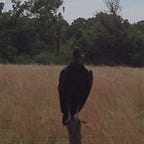6. Fiction, Nonfiction & The Confusion of Form
***This is work from an 8-part series (Truth, Lies & Bullshit in the Art of Creative Nonfiction): Part 1, Part 2, Part 3, Part 4, Part 5, Part 6, Part 7, Part 8, Works Cited (includes intro and sections).***
In the beginning there was art. Before outing liars and going on literary witch-hunts, before Google searches and meetings with publishing committees at large houses, writers created (and still create) art. That is the true business we are in. We make art. Merriam-Webster defines art as “something that is created with imagination and skill and that is beautiful or that expresses important ideas or feelings.” With the pressures of professional writing and artistic competition, it is easy for writers to forget that art is our ultimate goal. We fight about Truth as if it is our biggest principle to uphold. But actually, it is in recognizing that the use of Truth and how it is kneaded is the key to understanding nonfiction art; and an important element that affects truth in nonfiction and may even contribute to some of the confusion that surrounds the genre.
Using a very simplified understanding, it can be easy to separate fiction and nonfiction into two distinct categories. Fiction stories are made up and nonfiction stories are true. From our previous discussions, however, we understand that “truth” can have a multidimensional meaning for some writers, publishers and readers. The definition of “truth” is not the only confusion. There is also great confusion around the term “creative nonfiction” too many sub-genre labels like “autobiographical fiction,” too flexible of standards determining the hierarchy of ethics in creative nonfiction, and vague, grey-zone categories for all these terms and standards to fall within. Given the economical climates of small and large presses, online publishing ease, electronic reading, and all of the other changes happening now and in the future, the writing industry feels a bit like the Wild, Wild West.
The term creative nonfiction often seems like an invitation for its definers to get “creative” with its meaning. Some people automatically assume that creative nonfiction is fiction because if you “create” anything in nonfiction it becomes fiction. Others believe that there is no way “narrative journalism” falls within creative nonfiction because “journalism” is based on facts and in no way “creates” scenes, dialogues or names. There is a lot of broad-based thinking that contributes to these types of labels. Old-school writers would not use a term like “narrative journalism,” they might simply call it an “essay.” But in the hunt to layer works with legitimacy, and garner authority and attention, writers and publishers look for ways to automatically make their work appeal to more people. Because some terms like creative nonfiction are riddled with controversy, writers are learning to stay away from them and instead invent new terms to try to describe artistic forms already present in the genre.
Still, other writers, like Jamaica Kincaid, note a ridiculous aspect of categorizing art. In a June 2013 interview with Guernica Magazine, Kincaid stated: “Often the lines that define the traditional European arrangement of fiction, non-fiction, history, etc. are not useful. These lines can distort the world we, people who look like me, live in — and by the world, I mean our personal experience of it. When it is described in a history book, when it’s even included in a history book, it is only good as a reference. The Wretched of the Earth could easily be a book of fiction, an imaginative work. [Frantz] Fanon turns out to have been a psychiatrist, so it can be put in the category of Psychiatry. You could also put it in the category of Politics. The point is you can put it in all sorts of categories, but it does not sit comfortably. “Black Skin,” “White Mask,” “Invisible Man.” For people who have a memory of what happened, none of the categories that exist are useful” (Alleyne).
This statement just feels True. As a reader I absorb — via some sort of cosmic osmosis — the feelings and lessons available in literature. All readers surely do too. So even as a reader, I rarely reflect too heavily on any category. However, categories can be quite handy in the Wild, Wild West. Below is the basic system I use in order to categorize my work and other authors’ works:
***This is work from an 8-part series (Truth, Lies & Bullshit in the Art of Creative Nonfiction): Part 1, Part 2, Part 3, Part 4, Part 5, Part 6, Part 7, Part 8, Works Cited (includes intro and sections).***
